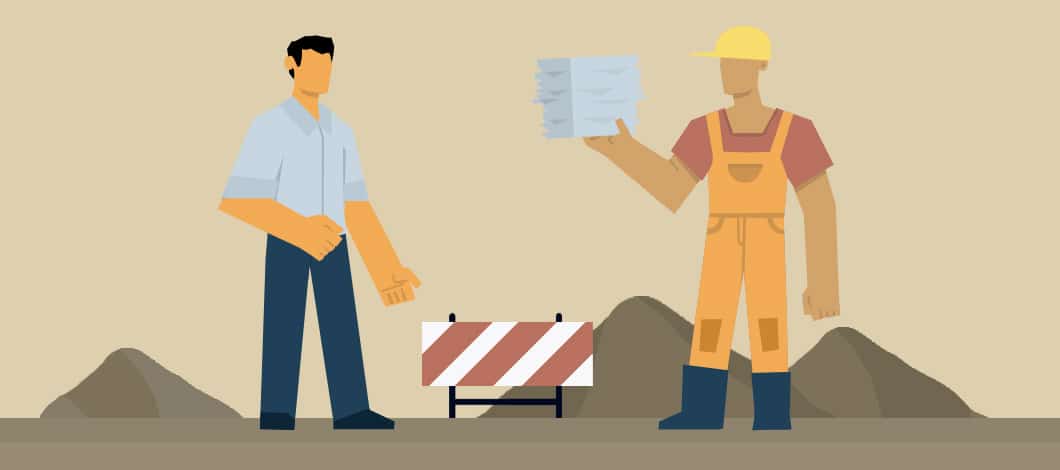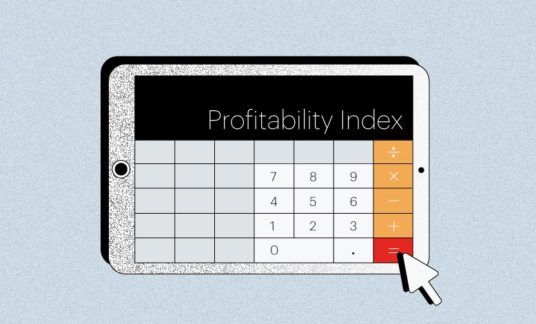If you’re in the construction business, you know that getting paid promptly can often be a struggle. Keep in mind payments can take an average of 83 days — slower than in any other industry surveyed. Enter pay applications for construction.
About half of contractors don’t get paid on time. More than half had to resort to filing mechanics liens or threatened to do so to get paid, according to a survey by Levelset and TSheets by QuickBooks.
Slow pays and no-pays can cause major cash-flow problems and seriously hurt your ability to bid on other jobs or get work done. When you produce a contractor payment application, you can increase your odds of getting paid more promptly.
What Is a Pay Application for Construction?
A construction pay application, or contractor payment application, is a set of documents that streamlines the process of invoicing and requesting payments. Construction pay apps provide the documentation needed to justify payment demands, detailing the percentage of work completed and showing the amount that should be paid.
As construction payment applications are more complex than a typical invoice, contractors need to include additional documentation to support payment requests. In an application for payment, construction companies can include everything required for projects to facilitate easier processing, especially in cases where progress billing is part of the agreement.
Your application for payment construction should include a schedule of values that details work-in-progress, shows what work has been completed and accounts for the owner or general contractor retainage required.

How Does a Contractor Payment Application Work?
A pay app for construction companies use will dictate how the payment is processed.
Any billed charges need to reflect the agreed-upon amounts in the construction contract with the amount of detail and documentation required by the architect or project owner.
Once all the necessary paperwork has been gathered and the information has been entered, the packet is presented to the architect and the project owner for approval to release funds.
What’s Included in a Pay Application for Construction?
The typical pay application construction companies and contractors use should include the following:
- Contract amounts as agreed
- Sum of approved change orders (if any)
- Value of work completed
- Value of project material stored on-site
- Retained amounts
- Total earned to date
- Total payments received to date
- Amount currently due
- Historical balances, charges and payments
The application for payment construction typically uses one of 2 accepted industry forms:
- The G702-1992 Application and Certificate for Payment (Contractors)
- 710 Application for Payment (Subcontractors)
The G702-1992 Application and Certificate for Payment was created by the American Institute of Architects (AIA). The 710 Application for Payment is a standard subcontractor payment form developed by ConsensusDocs.
There are other forms available and different contractor payment apps may use different forms. You’ll want to make sure any form you use will fulfill your construction pay application checklist when applying for payment.
Make sure that owners trying to figure out how to pay for construction work have everything they need to process your payment and avoid unnecessary delays.
Contractor Pay App Documentation
Contractors know they don’t always get fully paid for the work they do on every job. Nearly 40% of contractors report they don’t get paid fully on every job. Many get hit with back charges, deductions, offsets and other withholding after projects are completed.
The best defense is accurate and detailed documentation.
Your contractor payment application should include all required documentation and any supporting documentation, such as a subcontractor payment form.
Other documentation may include:
Schedule of Values
A schedule of values (SOV) lists every work item on a project and its costs or value. The SOV is a comprehensive list of the entire construction project and price. It will detail the project step-by-step and lets project owners see how much of the project has been completed at any point in time.
SOVs can vary greatly depending on contractors, subcontractors and project managers. Some architects or owners require summaries while others may require line-item expenses for each work item.
Continuation Sheets
A continuation sheet breaks down the work and materials a contractor brings to a project.
Using the schedule of values as a base, a continuation sheet provides the details to support the payment application. Documentation will support payment requests for work completed, materials presently stored and the total amount of work completed.
The AIA publishes the G703 Continuation Sheet to use alongside its G702 application for payment.
Daily Construction Report
Some projects will require a daily construction report which provides documentation on daily operations. This is especially important in case of any delays, such as weather or material incidents that may impact timelines.
For contractors, it can also be helpful in case of disputes because it provides communication of issues or concerns as they arise.
Change Orders
According to the US Government Accountability Office (GAO), one of the main reasons payments get delayed is because of change orders. The longer it takes to process change orders, the longer it takes to get paid, especially for federal projects.
As you know, change orders are common occurrences. Changer orders can account for as much as 8% to 14% of capital construction projects, according to the Building Solutions group at CRH. Integrated Business Systems notes about 6% of change order-related fees don’t get paid because they never get billed.
Because change orders will affect the final price for a project, you may need to submit an adjusted contract amount. Change orders can be additive or deductive depending on the changes required.
Conditional Lien Waivers
A conditional lien waiver is often included to let architects and project owners know that a contractor will waive the right to file a mechanic’s lien upon receipt of payment. Some owners will require lien waivers before processing payment.
Supplier, Subcontractor or Vendor Invoices
Often suppliers and subs don’t get paid until contractors do. If work or materials have been provided during the pay application construction period, open invoices can provide additional documentation to support your request for payment.
Similarly, if you have purchased materials or paid invoices already, receipts can be included as proof of payment.
Records, Diagrams and Photos
Photos, images and diagrams to document work projects provide a visual record of a project. Many contractors provide pictures on their daily construction reports to back up claims and provide a record in case of any future disputes.
Photos are also a good way to document change orders, punch list or closeout inspections to show the work was completed as requested.
Drone video, building information modeling (BIM) and 3D imaging are becoming more common for documentation.
Certified Payroll
Federal construction requirements are subject to the Davis-Bacon Act, a federal law that requires all contractors and subcontractors pay workers at least the local prevailing wage rate for any construction jobs in excess of $2,000. If you are working on a job that requires meeting prevailing wages, you will also have to certify payroll.
Certifying payroll has its set of requirements as well. It must include:
- Names of all employees
- Project work completed
- Wages paid
- Any benefits they received
- Hours worked
- Gross wages
- Any amounts withheld
Contractors also must provide a statement of compliance, which is a document attesting that the contractor complied with regulations, paid all workers at least the prevailing wage and that the information is accurate.
The Davis-Bacon Act also requires contractors to pay wages at least once a week and submit certified payroll and a statement of compliance weekly. Failure to comply can lead to significant penalties, including a 3-year ban from future government contracts and criminal prosecution.
The Department of Labor Wage and Hour Division produces the WH-347 Payroll Form that contractors can use.
Contractor Payment Forms
Few people like filling out forms and paper, but an application for payment construction is crucial to getting paid.
Getting accurate and timely information is of significant concern. The majority of general contractors (60%) point to struggles with coordination and communication involving team members and contract documents as negatively impacting productivity.
Ensuring you get paid for the work you’ve done will be much easier using a standard application for payment construction and providing the necessary supporting documentation.











